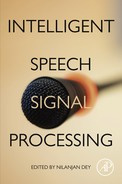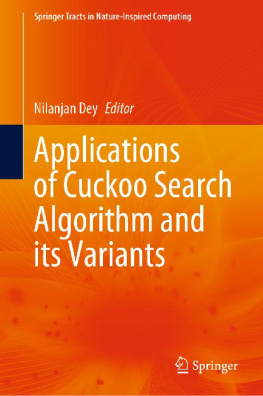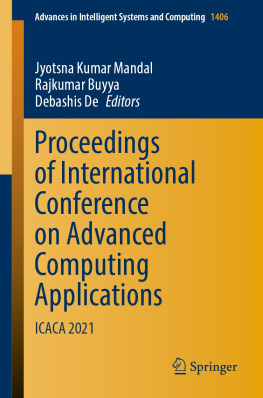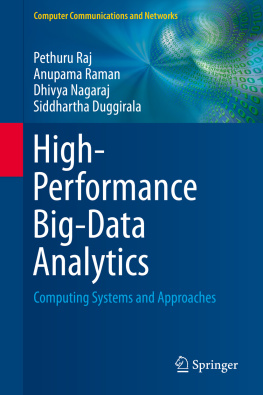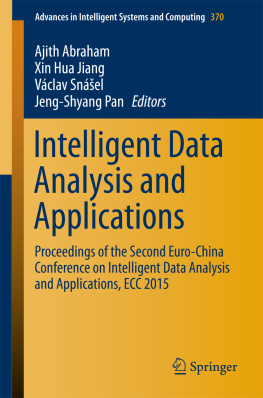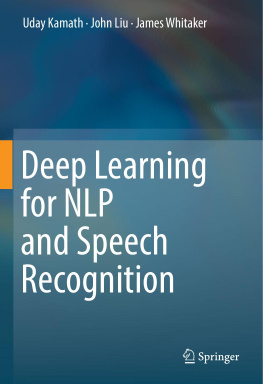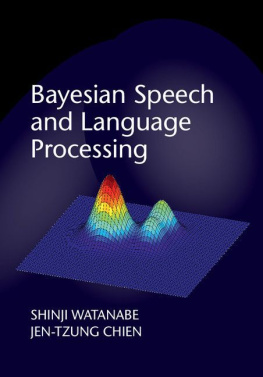Department of Information Technology, Techno India College of Technology, Kolkata, India
Copyright
Academic Press is an imprint of Elsevier
125 London Wall, London EC2Y 5AS, United Kingdom
525 B Street, Suite 1650, San Diego, CA 92101, United States
50 Hampshire Street, 5th Floor, Cambridge, MA 02139, United States
The Boulevard, Langford Lane, Kidlington, Oxford OX5 1GB, United Kingdom
2019 Elsevier Inc. All rights reserved.
No part of this publication may be reproduced or transmitted in any form or by any means, electronic or mechanical, including photocopying, recording, or any information storage and retrieval system, without permission in writing from the publisher. Details on how to seek permission, further information about the Publishers permissions policies and our arrangements with organizations such as the Copyright Clearance Center and the Copyright Licensing Agency, can be found at our website: www.elsevier.com/permissions.
This book and the individual contributions contained in it are protected under copyright by the Publisher (other than as may be noted herein).
Notices
Knowledge and best practice in this field are constantly changing. As new research and experience broaden our understanding, changes in research methods, professional practices, or medical treatment may become necessary.
Practitioners and researchers must always rely on their own experience and knowledge in evaluating and using any information, methods, compounds, or experiments described herein. In using such information or methods they should be mindful of their own safety and the safety of others, including parties for whom they have a professional responsibility.
To the fullest extent of the law, neither the Publisher nor the authors, contributors, or editors, assume any liability for any injury and/or damage to persons or property as a matter of products liability, negligence or otherwise, or from any use or operation of any methods, products, instructions, or ideas contained in the material herein.
Library of Congress Cataloging-in-Publication Data
A catalog record for this book is available from the Library of Congress
British Library Cataloguing-in-Publication Data
A catalogue record for this book is available from the British Library
ISBN: 978-0-12-818130-0
For information on all Academic Press publications visit our website at https://www.elsevier.com/books-and-journals

Publisher: Mara Conner
Acquisition Editor: Mara Conner
Editorial Project Manager: Thomas Van Der Ploeg
Production Project Manager: Punithavathy Govindaradjane
Cover Designer: Miles Hitchen
Typeset by SPi Global, India
Contributors
Numbers in parenthesis indicate the pages on which the authors' contributions begin.
Rajesh Kumar Aggarwal 5 National Institute of Technology Kurukshetra, Kurukshetra, India
Mazid Alam 175 Department of CSE, Kaziranga University, Jorhat, India
David Brown 39 Sat-Com (PTY) Ltd., Windhoek, Namibia
Himanish Shekhar Das 81 Department of Computer Science and Engineering, National Institute of Technology Silchar, Silchar, India
Anilesh Dey 139 Department of Electronics and Communication Engineering, Narula Institute of Technology, Kolkata, India
Smita Dey 175 Department of CSE, Kaziranga University, Jorhat, India
Juan C. Gmez 55 Laboratory for System Dynamics and Signal Processing, Universidad Nacional de Rosario, CIFASIS-CONICET, Rosario, Argentina
Dharm Singh Jat 101 Namibia University of Science and Technology, Windhoek, Namibia
S. Jothilakshmi 113 Department of Information Technology, Annamalai University, Chidambaram, India
Biswajit Karan 153 Department of Electronics and Communication Engineering, Birla Institute of Technology, Mesra, Ranchi, India
Anton Sokamato Limbo 101 Namibia University of Science and Technology, Windhoek, Namibia
Kartik Mahto 153 Department of Electronics and Communication Engineering, Birla Institute of Technology, Mesra, Ranchi, India
Rajesh Kumar Muthu 39 Vellore Institute of Technology, Vellore, India
A. NithyaKalyani 113 Department of Computer Science and Engineering, Annamalai University, Chidambaram, India
Vishal Passricha 5 National Institute of Technology Kurukshetra, Kurukshetra, India
Pinki Roy 81 Department of Computer Science and Engineering, National Institute of Technology Silchar, Silchar, India
Gonzalo D. Sad 55 Laboratory for System Dynamics and Signal Processing, Universidad Nacional de Rosario, CIFASIS-CONICET, Rosario, Argentina
Sajal Saha 175 Department of CSE, Kaziranga University, Jorhat, India
Sitanshu Sekhar Sahu 153 Department of Electronics and Communication Engineering, Birla Institute of Technology, Mesra, Ranchi, India
K.C. Santosh 1 Department of Computer Science, The University of South Dakota, Vermillion, SD, United States
Sudhangshu Sarkar 139 Department of Electrical Engineering, Narula Institute of Technology, Kolkata, India
Charu Singh 39, 101
Sat-Com (PTY) Ltd.
Windhoek, Namibia
Lucas D. Terissi 55 Laboratory for System Dynamics and Signal Processing, Universidad Nacional de Rosario, CIFASIS-CONICET, Rosario, Argentina
Maarten Venter 39 Sat-Com (PTY) Ltd., Windhoek, Namibia
About the Editor
Nilanjan Dey is an assistant professor in the Department of Information Technology at Techno India College of Technology, Kolkata. He completed his PhD from Jadavpur University in 2015. He is a visiting fellow at the Wearables Computing Laboratory, Department of Biomedical Engineering University of Reading, UK; visiting professor at the College of Information and Engineering, Wenzhou Medical University, China, and Duy Tan University, Vietnam. He has held the honorary position of visiting scientist at Global Biomedical Technologies Inc., CA, USA (201215).
He is the editor-in-chief of the International Journal of Ambient Computing and Intelligence (IGI Global), series co-editor of Springer Tracts in Nature-Inspired Computing (Springer) and Advances in Ubiquitous Sensing Applications for Healthcare (AUSAH; Elsevier), and series editor for Intelligent Signal Processing and Data Analysis (CRC Press). He has authored/edited more than 40 books for Elsevier, Wiley, CRC Press, and Springer, and published more than 350 research articles. His primary research interests include medical imaging, machine learning, bioinspired computing, data mining, and related fields. He is a life member of the Institute of Engineers (India).
Preface
Intelligent speech signal processing methods have increasingly replaced the conventional analog signal processing methods in several applications, including speech analysis and processing, telecommunications, and tracking. These intelligent speech signal processing approaches support different areas in a variety of everyday problems, multimedia communications, industrial automation, and biometrics. Incorporating different signal processing approaches, such as signal analysis using an analytical signal description, can be combined for efficient speech detection. In intelligent systems, pattern recognition and machine learning methods are vital tools for reasoning under uncertainty. They help to extract significant information from massive data in an automated fashion using statistical and computational methods. This domain is related to probability, statistics, optimization methods, and control theory. The focus is on providing solutions for tasks at which intelligence is inevitably essential. Application domains include computer vision, speech processing, natural language processing, manmachine interfaces, expert systems, and robotics, etc. Typically, there are general attributes that should be included in the intelligent signal processing system, namely nonlinearity, adaptively, and robustness. A speech signal processing device that operates in a nonstationary environment can be considered intelligent once it is able to explore the information content of its input in an efficient mode and at all times.

